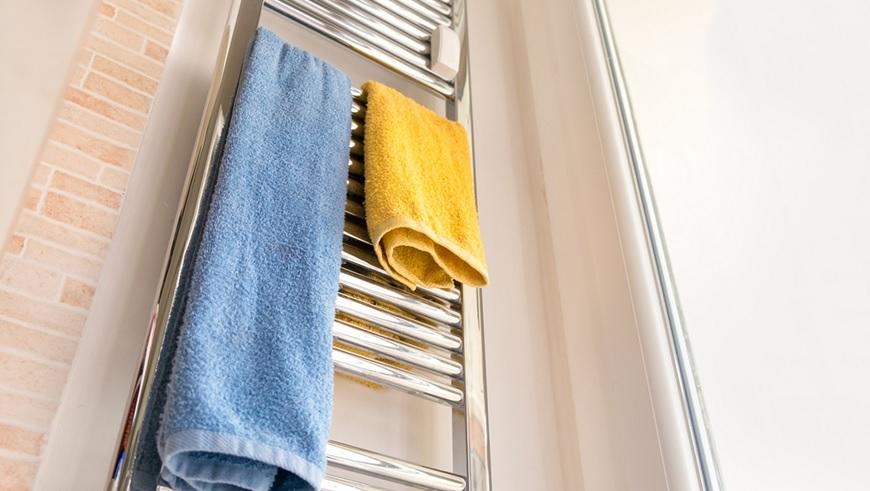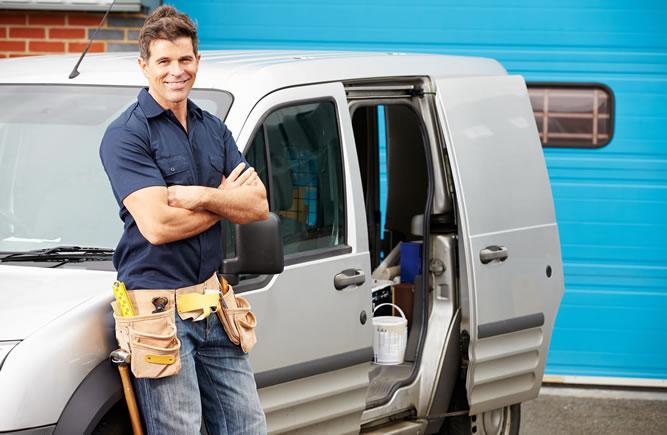Heated Towel Rail Installation Cost
Last updated 31st July, 2025
Want to know more about heated towel rail installation?
All you need to know about fitting a heated towel rail radiator in a bathroom including costs of materials, labour and time frames.
Continue below!

Table of Contents
How Much Does It Cost to Install a Heated Towel Rail?
Installing a heated towel rail typically costs between £150 and £700 depending on type and size, with electric rails costing around £150 to £250 and larger wet system rails £400 to £700 including materials and labour.
A heated towel rail radiator in your bathroom is a stylish and functional alternative to the traditional radiator. They come in a variety of designs and styles to suit your existing decor and personal preference, plus you can even fit them yourself if you have decent electrical wiring and plumbing skills (though you will need to adhere to the Electrical Wiring Regulations for special installations in bathrooms and other "wet" areas).
There are two types of heated towel rails, electric towel rails are stand-alone units which simply connect your electricity supply, whereas the other type of towel radiators, the "wet" type, need to be connected to the central heating system.
Both types have their own advantages and disadvantages, hopefully this article will help you decide which is better, plus offer some helpful pricing information to ensure you get a good deal if hiring a contractor to fit the heated towel rail for you.
Heated Towel Rail Installation Prices
Typical pricing information has been collected to help you make an informed decision when hiring a Gas Safe engineer or electrician to install and test a heated towel rail. These prices act as a good guide, but the actual cost you pay may well change depending on your location and specific requirements.
The average material cost to fit a heated towel rail radiator in a bathroom will depend on the price of the radiator you chose to install and extra costs may be incurred for things such as additional piping to install the radiator. Most towel radiators cost between £30-£200 depending on the size and finish.
The average electrician or other qualified tradesperson will usually charge around £100 to £200 per day in labour costs (although London and the South East are higher than the national average). Installing the heated towel rail will take around 2-4 hours, with extra time added on if new piping is required to replace the old.
Below are some estimated costs of hiring a specialist to supply and install a heated towel rail radiator
| Job Description | Avg. Cost | Duration |
|---|---|---|
| Installing an electric towel rail | £150-£250 | 2-3 hours |
| Installing a higher output larger towel rail radiator | £400-£700 | 3-4 hours |
Heated Towel Rail Installation Cost Breakdown Calculator
Individual costs of installing a mid-range towel radiator in a bathroom - £450
Materials
£200
Tradesmen
£230
Waste Removal
£20
Choosing a Heated Towel Rail
There are 2 types of heated towel radiator/rails, electric towel rails that need installing by an electrician and water filled towel radiators that require a plumber. You can even get heated towel rails which combine the two systems.
Remember that standard towel rails don't put out a lot of heat, they are OK for drying towels, but they may not heat the bathroom properly, unless it is very small.
The electric rails require proper fitting to an electrical socket in the bathroom by a competent electrician, by law. The water filled ones run off your central heating system and in most cases the heated towel rail is simply swapped with the old radiator with little to no pipe reconfiguration.
Electric towel rails offer advantages in terms of being maintenance free and quiet in operation, there is also no chance of leaks! The modern direct intelligent heat technology means they are cheaper to run that you would think too.
When fitting a "wet" towel rail, always try and choose a size close to the size of the existing radiator. Otherwise the plumber may have to take up the flooring in the bathroom to connect the new heated towel rail, adding costs and inconvenience in the form of additional mess.
Remember too that location has a major impact on pricing for plumbing jobs. If you live in London or the South East, the cost of living is higher so the labour rates are considerably more expensive (as much as 50% more expensive than cheaper parts of the UK like Wales and the North).
Additional Heated Towel Rail Installation Costs
When installing a heated towel rail, there are some additional costs or bathroom jobs that are sometimes connected that are worth considering having done at the same time. Below we look at a few of these related tasks in more detail.
Flushing Heating System
If fitting a "wet" heated towel rail, which will need connecting to the existing central heating circuit, it may be a good time to get a power flushing of your current heating system while the plumber is already on site.
On average this can cost between £300 and £600 based on a 2-bedroom house, although prices will vary depending on how many radiators you have and the location of your property.
Moving a Radiator
You may need to consider moving a radiator before fitting the new towel rail, which a plumber can do so for between £30 and £120. If the towel rail is instead of a radiator that's currently on the same wall, there may be an additional charges as part of the waste removal of around £20 to £50 to remove any existing fittings.
Replacing a Radiator
Likewise, rather than move an existing one, it may be time to replace a radiator altogether. Whether it's a single or double, expect to pay around £200, including labour and materials.
Fitting Wall Tiles or Painting Walls
The chances are removing a radiator or installing a towel rail will impact on the interior of the room, whether that's creating a need to replace bathroom wall tiles (anywhere from £150 to £1,000) or a forced opportunity to repaint the walls (£250 to £350).










